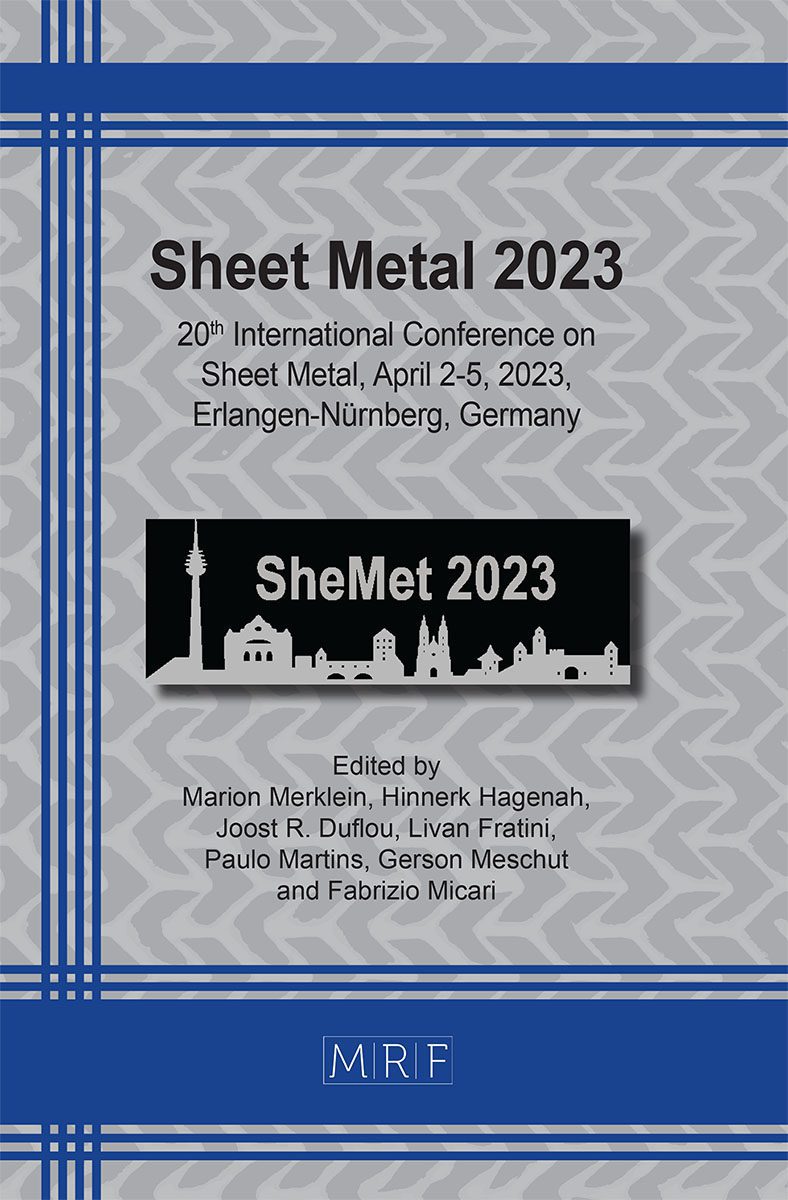Experimental investigation of the cause and effect relationships between the joint and the component during clinching
Christian Steinfelder, Alexander Brosius
download PDFAbstract. The combination of the mechanical properties of a clinched joint and of the material surrounding the joint determine the resulting properties of the component and joint. The cause and effect relationships between the joint and the joint environment offers the possibility of a specific modification through an adaptation in the design process. In order to identify these cause and effect relationships and resulting interactions experimentally, numerous of experiments are required. In this publication, a concept for the automated manufacturing of head tensile test and shear tensile test specimens – from cutting to clinching – by using a punch laser machine is presented. Based on a full-factorial experimental design, the parameters change of the properties of the joint environment by beading and change of the punch displacement are addressed. The influence on the properties of the clinched specimen is evaluated based on the variables Stiffness, force at the beginning of yielding and maximum force at head tensile loading and shear tensile loading. In addition, the geometric quality parameters of neck thickness, interlock and bottom thickness are evaluated. The relationships can be used to apply uniform loads to joints in joined structures to counteract oversizing.
Keywords
Sheet Metal, Joining, Stiffness
Published online 3/17/2023, 8 pages
Copyright © 2023 by the author(s)
Published under license by Materials Research Forum LLC., Millersville PA, USA
Citation: Christian Steinfelder, Alexander Brosius, Experimental investigation of the cause and effect relationships between the joint and the component during clinching, Materials Research Proceedings, Vol. 25, pp 147-154, 2023
DOI: https://doi.org/10.21741/9781644902417-19
The article was published as article 19 of the book Sheet Metal 2023
![]() Content from this work may be used under the terms of the Creative Commons Attribution 3.0 licence. Any further distribution of this work must maintain attribution to the author(s) and the title of the work, journal citation and DOI.
Content from this work may be used under the terms of the Creative Commons Attribution 3.0 licence. Any further distribution of this work must maintain attribution to the author(s) and the title of the work, journal citation and DOI.
References
[1] S. Martin, K. Kurtusic, and T. Tröster, Influence of the Surrounding Sheet Geometry on a Clinched Joint, Key Eng. Mater. 926 (2022) 1505-1515. https://doi.org/10.4028/p-09md1c
[2] M. Trzesniowski, Rahmen Chassis, in: Gesamtfahrzeug, Springer Fachmedien, Wiesbaden, 2019, pp. 267-353. https://doi.org/10.1007/978-3-658-26696-7_6
[3] D. Emmrich, Entwicklung einer FEM-basierten Methode zur Gestaltung von Sicken für biegebeanspruchte Leitstützstrukturen im Konstruktionsprozess, Dissertation (2004).
[4] L. Ewenz, J. Kalich, M. Zimmermann, and U. Füssel, Effect of different tool geometries on the mechanical properties of al-al clinch joints, Key Eng. Mater. 883 (2021) 65-72. https://doi.org/10.4028/www.scientific.net/KEM.883.65
[5] J. Mucha, The analysis of lock forming mechanism in the clinching joint, Mater. Des. 32 (2011) 4943-4954. https://doi.org/10.1016/j.matdes.2011.05.045
[6] DVS/EFB-Merkblatt 3480-1: Testing of Properties of Joints: Testing of Properties of mechanical and hybrid (mechanical/bonded) joints.































